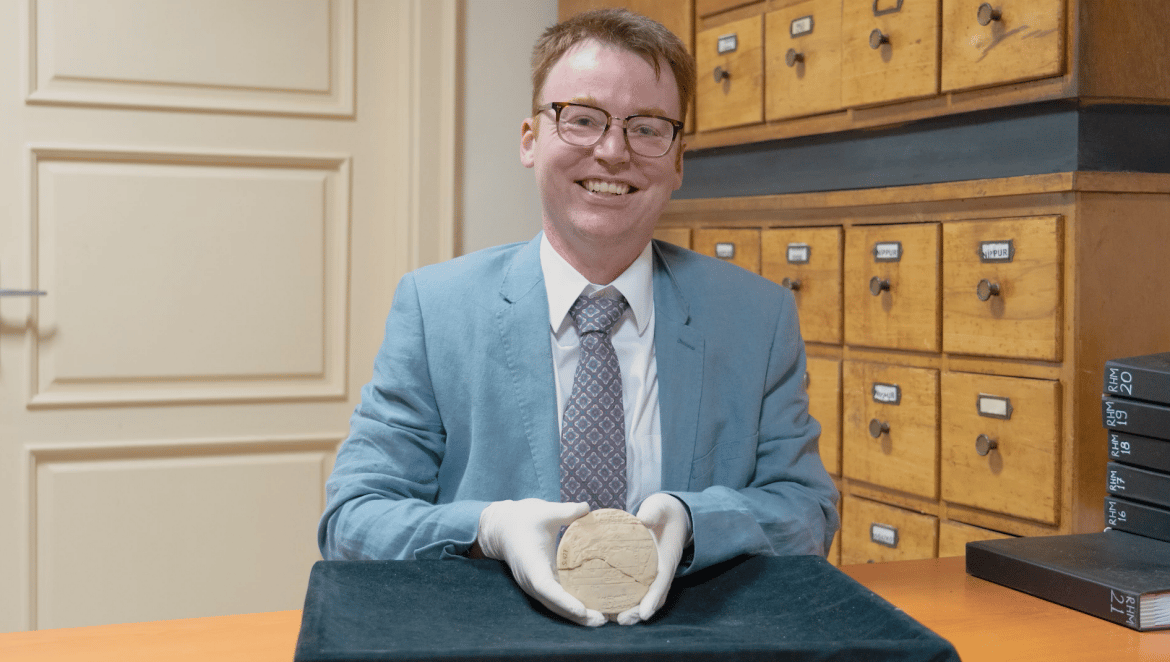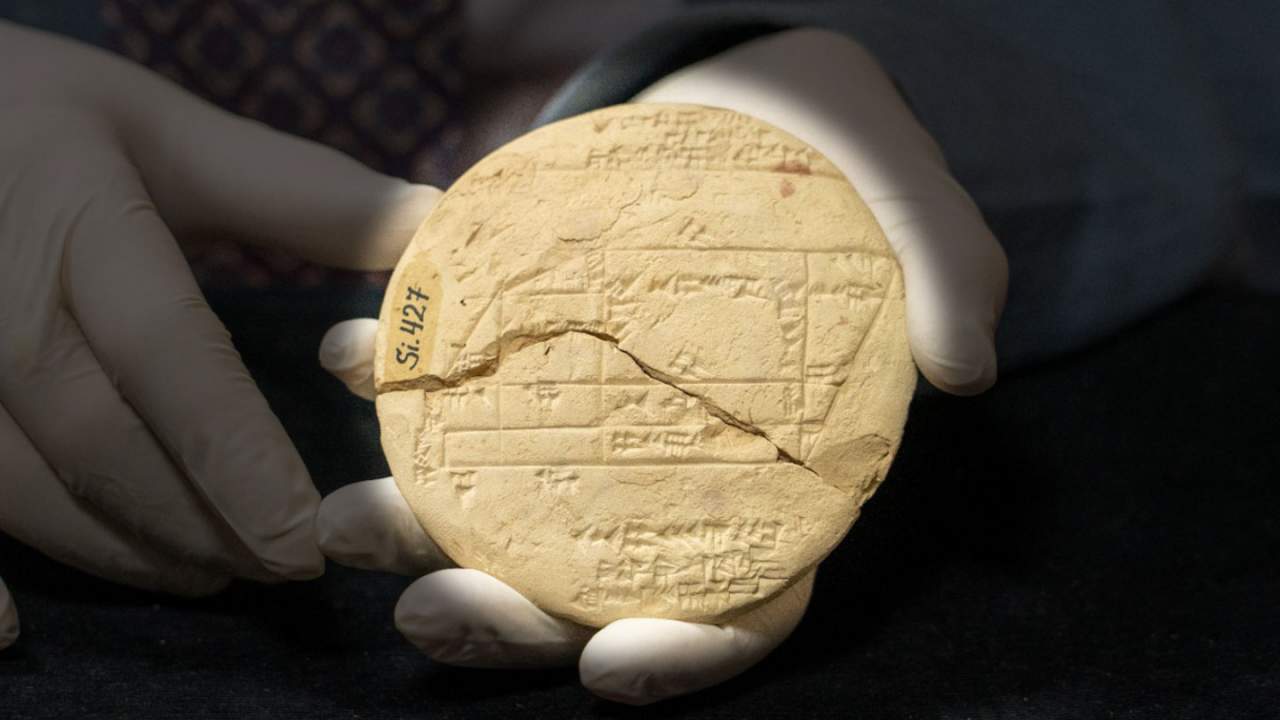
On a 3700-year-old clay tablet that has been hidden in plain sight in an Istanbul museum for over a century, an Australian mathematician has unearthed the beginnings of applied geometry. The tablet, Si.427, was unearthed in what is now central Iraq in the late 1800s. But its importance was unknown until today, according to the UNSW scientist’s investigation.
Most interesting of all, Si.427 is the oldest example of applied geometry; a gripping human narrative of land surveying is there in the study today in the Foundations of Science.
“Si.427 dates from the Old Babylonian (OB) period – 1900 to 1600 BCE,” says lead researcher Dr. Daniel Mansfield from UNSW Science’s School of Mathematics and Statistics.
“It’s the only known example of a cadastral document from the OB period, which is a plan used by surveyors to define land boundaries. In this case, it tells us legal and geometric details about a field that’s split after some of it was sold off.”
Because the surveyor employs what is now famous as “Pythagorean triples” to produce exact right angles, this is a noteworthy artifact.
“The discovery and analysis of the tablet have important implications for the history of mathematics,” Dr. Mansfield says. “For instance, this is over a thousand years before Pythagoras was born.”
Meet Si.427
Si.427 is a hand tablet, an Old Babylonian surveyor made it between 1900 and 1600 BC. It composes of clay, and the surveyor used a stylus to write on it. A diagram of a field appears on the front. The field is being divided and some of it sold. The lines are there to demarcate the boundaries of the various fields. The boundaries are really precise, perhaps more so than you’d expect at the time.
The surveyor was able to achieve such precision by employing Pythagorean triples. It allowed him to establish precisely perpendicular boundary lines. A Pythagorean triple, in its most basic form, has sides of 3, 4, and 5 – forming a perfect right angle. The text on the back of the tablet is in the cuneiform language, one of the earliest writing systems. We see enormous numbers at the bottom of the tablet’s back — that’s the only thing we haven’t worked out yet.
Hot on the heels of another world-first find
Dr. Mansfield hypothesized in 2017 that Plimpton 322, a remarkable object from the same period, was a unique type of trigonometric table.
“It is generally accepted that trigonometry — the branch of maths that is concerned with the study of triangles — was developed by the ancient Greeks studying the night sky in the second century BCE,” says Dr. Mansfield.
“But the Babylonians developed their own alternative ‘proto-trigonometry’ to solve problems related to measuring the ground, not the sky.”
The tablet discovered today is likely to exist before Plimpton 322; in fact, surveying issues are thought to have influenced Plimpton 322.
“There is a whole zoo of right triangles with different shapes. But only a very small handful can be used by Babylonian surveyors. Plimpton 322 is a systematic study of this zoo to discover the useful shapes,” says Dr. Mansfield.
Tablet purpose revealed: surveying land
In 2017, the researchers theorized on the Plimpton 322, hypothesizing that it was most likely in use for practical purposes such as building palaces and temples, canal construction, or surveying fields.
“With this new tablet, we can actually see for the first time why they were interested in geometry: to lay down precise land boundaries,” Dr. Mansfield says.
“This is from a period where land is starting to become private — people started thinking about the land in terms of ‘my land and your land’, wanting to establish a proper boundary to have positive neighborly relationships. And this is what this tablet immediately says. It’s a field being split, and new boundaries are made.”
There are also hints regarding the stories behind these boundaries found on other tablets from the historical period.
“Another tablet refers to a dispute between Sin-bel-apli — a prominent individual mentioned on many tablets including Si.427 — and a wealthy female landowner,” Dr. Mansfield says.
“The dispute is over valuable date palms on the border between their two properties. The local administrator agrees to send out a surveyor to resolve the dispute. It is easy to see how accuracy was important in resolving disputes between such powerful individuals.”
According to Dr. Mansfield, the way these boundaries are; likewise reflects real geometric understanding.
“Nobody expected that the Babylonians were using Pythagorean triples in this way,” Dr. Mansfield says. “It is more akin to pure mathematics, inspired by the practical problems of the time.”
Creating right angles — easier said than done
Making a rectangle with sides 3 and 4 and a diagonal of 5 is likewise a simple approach to construct an accurate right angle. The 3-4-5 “Pythagorean triple” is formed by these unusual numbers; a rectangle with these measures has mathematically perfect right angles. This was crucial to ancient surveyors, and it is still in use today.
“The ancient surveyors who made Si.427 did something even better: they used a variety of different Pythagorean triples, both as rectangles and right triangles, to construct accurate right angles,” Dr. Mansfield says.
In the base 60 Babylonian number system, however, working with prime numbers larger than 5 is challenging.
“This raises a very particular issue — their unique base 60 number system means that only some Pythagorean shapes can be used,” Dr. Mansfield says.
“It seems that the author of Plimpton 322 went through all these Pythagorean shapes to find these useful ones.
“This deep and highly numerical understanding of the practical use of rectangles earns the name ‘proto-trigonometry’ but it is completely different to our modern trigonometry involving sin, cos, and tan.”
Hunting down Si.427
Dr. Mansfield first learned about Si.427 from excavation records; the tablet was a discovery of the Sippar expedition in 1894, in what is also now Iraq’s Baghdad province.
“It was a real challenge to trace the tablet from these records and physically find it — the report said that the tablet had gone to the Imperial Museum of Constantinople, a place that obviously doesn’t exist anymore.
“Using that piece of information, I went on a quest to track it down, speaking to many people at Turkish government ministries and museums, until one day in mid-2018 a photo of Si.427 finally landed in my inbox.
“That’s when I learned that it was actually on display at the museum. Even after locating the object it still took months to fully understand just how significant it is, and so it’s really satisfying to finally be able to share that story.”
Then, Dr. Mansfield’s next goal is to discover what other uses the Babylonians had for their proto-trigonometry.
Also, Dr. Mansfield has yet to solve one mystery: on the reverse of the tablet; at the bottom, the sexagesimal number ’25:29′ is in large font; think of it as 25 minutes and 29 seconds.
“I can’t figure out what these numbers mean — it’s an absolute enigma. I’m keen to discuss any leads with historians or mathematicians who might have a hunch as to what these numbers trying to tell us!”
